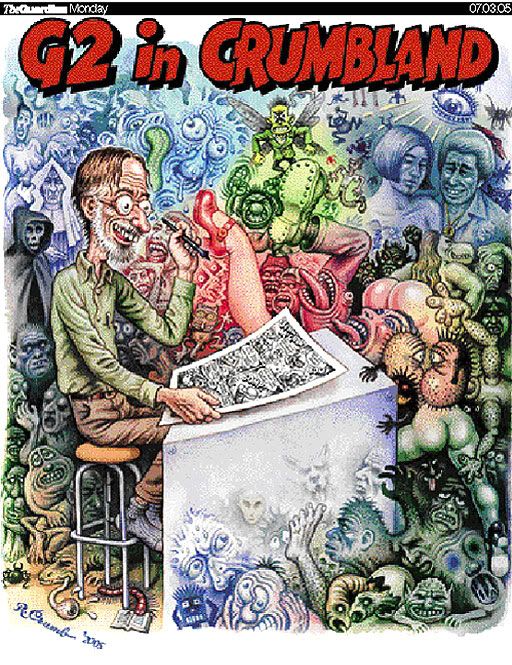The Man, the Legend, the Crumb

British newspaper The Guardian is running a special week long tribute to the father of independent comics Mr. R. Crumb, now the subject of the biography The R. Crumb Handbook. The Guardian's series kicks off with an interview by Simon Hatterstone at Crumb's house in France. Take a step into the awkwardness:
There is a tiny sign by the front door saying Crumb. It is handwritten in a familiar style. The door is unlocked. We walk in. It is dark and gloomy and not a little eerie. There are lights on but somehow they seem to emit darkness. We go up the first of a series of staircases, past guitar and banjo cases, and disturbing pictures of sexualised dolls and distressed cubist paintings. The room is also dark. Cabinet after cabinet is filled with pedantically labelled 78rpm records in brown cardboard sleeves. They look more like an installation than a record collection. Surrounding the latter are myriad other collections - bottle tops, toy cars, tiny musical instruments. In the corner of the room stands a man - tall and thin and slightly stooped - with his back to us. We are in Crumbland.

This is really a fascinating look at one of the most prolific and tragic men in the history of comics. Several of the pieces for the week are posted on the website, including an essay by Crumb about censorship and his own oddball family life, an article about just how Crumb has stayed relevant, and a short look into a young artist's perspective on Crumb. It's all disturbing. Be warned; but so is his legacy. Take his anecdote about the book that never was.
The cartoon that was not allowed to be sold in the state of New York was called Joe Blow which shows a family where the father has sex with the daughter. In fact, they all have sex with each other. That really bothered people in positions of authority. It was very problematic. They couldn't see the difference between making fun of the idea and promoting incest. People are not good at seeing satire. If you want to portray incest as something desirable you would make the characters seriously heroic, you would idealise them, what I was doing was drawing them like a happy family comic. There is a difference between what I was doing and straight pornography which is trying to sell straight titillation. That doesn't mean I don't get excited when I draw certain women. There's a lot of Aline in Devil Girl. I didn't realise when I started drawing her.





0 Comments:
Post a Comment
<< Home